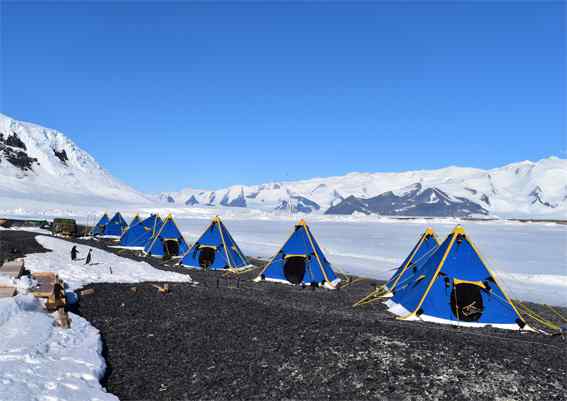Images of climate innovation
When penguins become neighbours
At this field camp on the icy beach of Cape Hallett in Antarctica, environmental protection is the top priority.
Only about 0.4% of Antarctica’s surface is ice-free and home to unique wildlife with fascinating survival strategies to thrive in the extreme cold. Are they equipped to cope with a changing climate?
Our international team is using field experiments to test ecosystem resilience - often under the supervision of the local residents.

What comes to mind when you think of Antarctica? Ice, penguins, and lots of snow.
There is much more to it. Without being impacted by human visitors until very recently, life in the Antarctic evolved to survive the coldest, windiest, darkest, and loneliest conditions on this planet with a surprising diversity.
Lichens from these habitats take 2000 years to grow the length of your thumb, but easily survive outer-space exposure or temperatures of -196 C, cold enough to freeze a human solid in a few seconds. A unique set of bacteria made a home on the warm surfaces near the 3,794 m summit of Mount Erebus, the southernmost active volcano on Earth. Collembola, tiny (2 -3 mm) insects that feed on microscopic algae, are so well adapted to living in the cold, that temperatures of just 30 C, a warm summer day in Scotland, are likely to kill them.
Our international team of researchers from the University of Edinburgh, the University of Waikato in New Zealand, and the Korean Polar Research Institute (KOPRI) are analysing ecosystem resilience by using non-destructive high-end technology that allows us to monitor the environment with minimal human footprint and maximal respect for the local ecosystems. We are finding that specialised organisms with unique life strategies are often inflexible to acclimatise to environmental change and therefore at high risk of losing their space.
Our results feed into the Antarctic environmental protection protocols and are essential to inform climate change-related conservation activities to better understand, value and protect these rare and unique ecosystems.
Entrant: Claudia Colesie , University of Edinburgh
Copyright: Claudia Colesie
Funding: Alexander von Humboldt Foundation via the Feodor Lynen Research Fellowship. Swedish University of Forest Research (SLU), Prof. V. Hurry. Catalyst Award funded by the New Zealand Ministry of Business, Innovation and Employment. Type B award from the New Zealand Antarctic Research Institute entitled "Resilience in Antarctic biota and ecosystems”. Antarctic Science Platform (ANTA1801).
Collaborators: Stephen Craig Cary and Charles Kai-Wu Lee (International Centre for Terrestrial Antarctic Research, University of Waikato); Prof Allan T.G. Green (Unidad de Botánica, Universidad Complutense de Madrid); Jeong-Hoon Kim and Myoungho Seo (Division of Life Science, Korea Polar Research Institute); Andrew Gray (Global Change Research Institute, University of Edinburgh)
Links
https://blogs.ed.ac.uk/claudia_colesie/
https://www.ed.ac.uk/geosciences/research/institutes-centres/institutes/global-change
https://environments.aq/publication_tag/terrestrial/